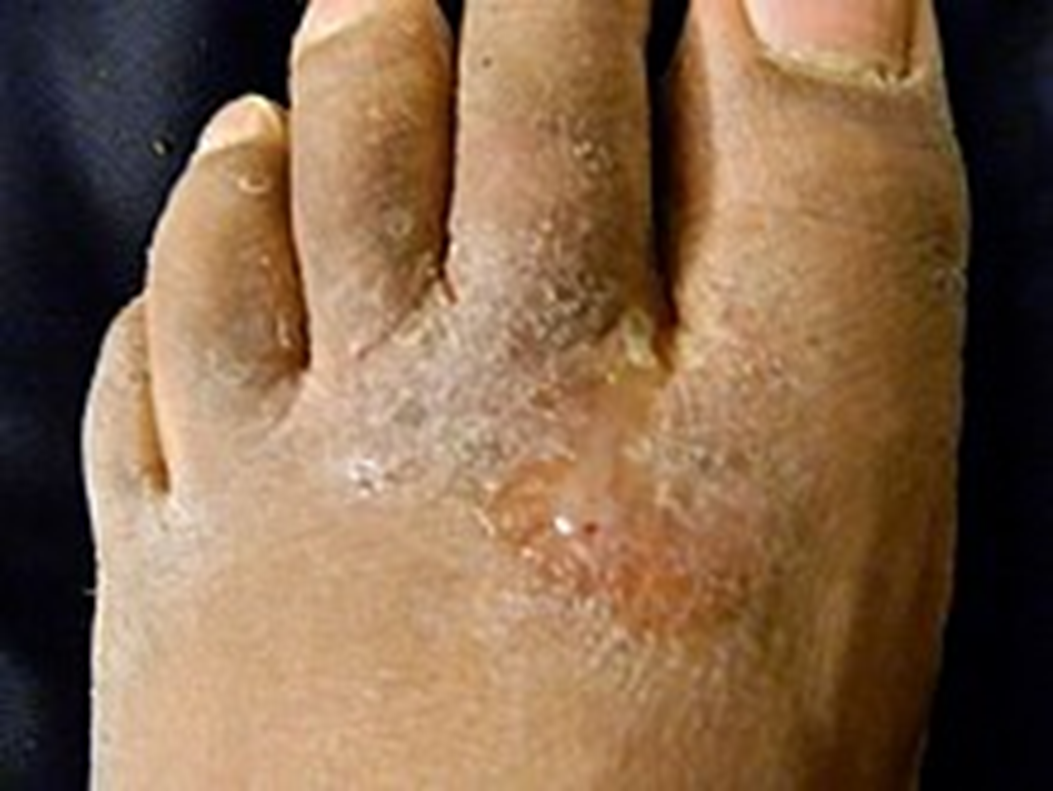A nurse is caring for a child who has tinea pedis. The child’s parent asks the nurse what this infection is commonly called. The nurse should respond with which of the following common names?
Shingles
Athlete’s foot
Fever blister
Pinworms
The Correct Answer is B
Choice A rationale
Shingles, also known as herpes zoster, is a viral infection that causes a painful rash and is caused by the varicella-zoster virus, the same virus that causes chickenpox.
Choice B rationale
Tinea pedis is a foot infection due to a dermatophyte fungus. It is the most common dermatophyte infection and is particularly prevalent in hot, tropical, urban environments. Interdigital involvement is most commonly seen (this presentation is also known as athlete’s foot, although some people use the term for any kind of tinea pedis).
Choice C rationale
Fever blister, also known as cold sores, are caused by the herpes simplex virus. They are small, fluid-filled blisters that develop on the lips or around the mouth.
Choice D rationale
Pinworms are a type of parasite that lives in the lower intestine of humans. They are tiny, narrow worms. They are white and less than a half-inch long.

Nursing Test Bank
Naxlex Comprehensive Predictor Exams
Related Questions
Correct Answer is A
Explanation
Step 1 is to convert the child’s weight from pounds to kilograms.
This is done by dividing the weight in pounds by 2.2, so 34 lbs ÷ 2.2 = 15.45 kg. Step 2 is to calculate the dose in mg. This is done by multiplying the weight in kg by the dosage per kg, so 15.45 kg × 35 mg/kg = 540.75 mg. Step 3 is to convert the dose in mg to ml. This is done by dividing the dose in mg by the concentration of the medication in mg/ml, so 540.75 mg ÷ 50 mg/ml = 10.815 ml. So, the total daily dosage in ml for this child is approximately 10.82 ml, rounded to the nearest hundredth as required.
Correct Answer is A
Explanation
Choice A rationale
Bending forward from the waist with the head and arms downward, also known as the Adams forward bend test, is the standard screening test for scoliosis.
Choice B rationale
Touching the chin to the chest and then looking up at the ceiling does not provide a view of the spine necessary for scoliosis screening.
Choice C rationale
Lying prone on the examination table is not a standard position for scoliosis screening.
Choice D rationale
Turning to the side and remaining in a relaxed position is not a standard position for scoliosis screening.
Whether you are a student looking to ace your exams or a practicing nurse seeking to enhance your expertise , our nursing education contents will empower you with the confidence and competence to make a difference in the lives of patients and become a respected leader in the healthcare field.
Visit Naxlex, invest in your future and unlock endless possibilities with our unparalleled nursing education contents today
Report Wrong Answer on the Current Question
Do you disagree with the answer? If yes, what is your expected answer? Explain.
Kindly be descriptive with the issue you are facing.
